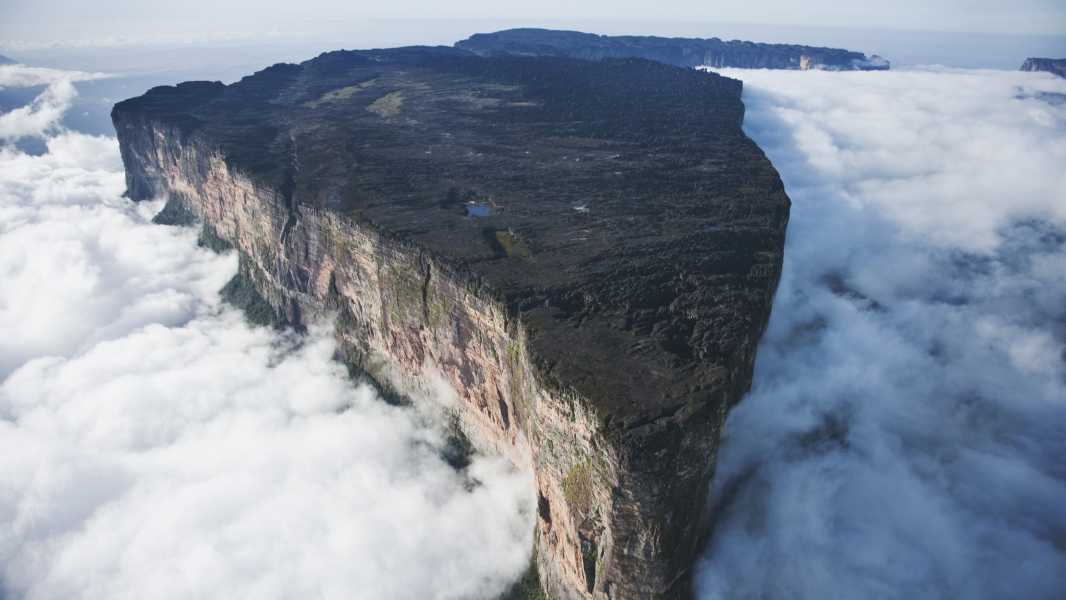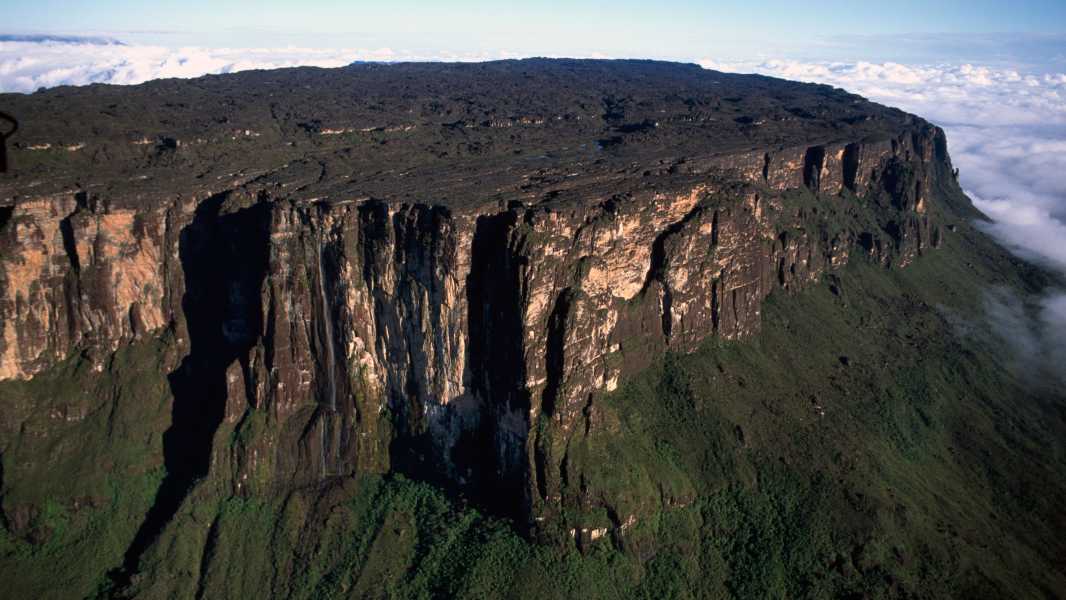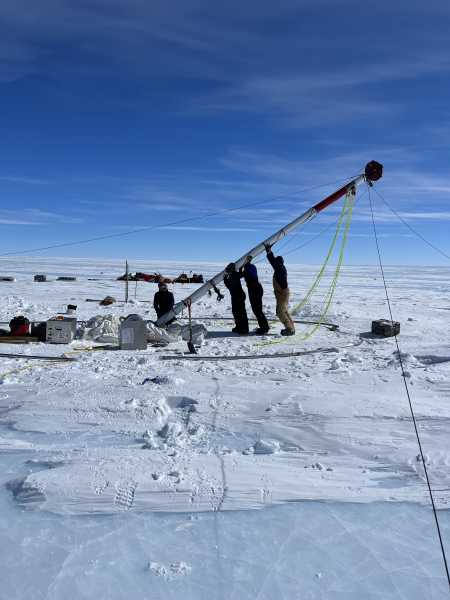
Mount Roraima is often shrouded in clouds, giving it the appearance of a floating island. (Photo by Martin Harvey/Getty Images)
Mount Roraima is a plateau with nearly vertical slopes located at the junction of the borders of Brazil, Venezuela and Guyana. The plateau is often surrounded by a ring of clouds, making its summit resemble an island in the sky.
The mountain rises 9,219 feet (2,810 meters) above the surrounding savannah, jutting out like a giant tabletop. Geologists refer to this type of formation as a “tepui,” which translates to “house of the gods” in the language of the Pemon, the indigenous people of the area. The Pemon believe that tepuis are sacred and that Mount Roraima is the remnant of a supernatural tree that produced all the fruits and vegetables of the world until a mythical figure named Macunaima cut it down, according to the International Business Times.
However, scientists have an alternative explanation for the origin of Mount Roraima. Tepuis are found exclusively in South America, particularly in Venezuela and western Guyana, where there are more than 100. According to the Geological Society of London, tepuis are the remains of a huge block of sandstone that formed in the area about 1.8 billion years ago, when large sand dunes slowly turned into rock.
Over the next 1.5 billion years, other rocks piled up on top of the sandstone, but those layers were eroded about 180 million years ago, according to the Geological Society. Wind and water then began to work on the sandstone, carving out the huge, steep-sided plateaus we see today, according to Geology Science. Eventually, geological uplift raised the plateau to its current height, according to Geology Science.
According to a 2012 study, the summit of Mount Roraima, like other tepuis, is home to a “lost world” ecosystem that has been isolated from the surrounding region for approximately 70 to 90 million years.

The upper part of Mount Roraima is home to a unique ecosystem.
Much remains unknown about how tepui ecosystems originated and evolved, but scientists have estimated that much of the flora and fauna on the summits is endemic, meaning it is found nowhere else. For example, according to the World Wildlife Fund, about a third of the vegetation found on the summits of all tepuis, including carnivorous plants and orchids, is endemic.
However, a 2012 study found that these ecosystems are not completely isolated. Scientists studied the DNA of four species of tree frogs living on separate tepuis to determine whether
Sourse: www.livescience.com





